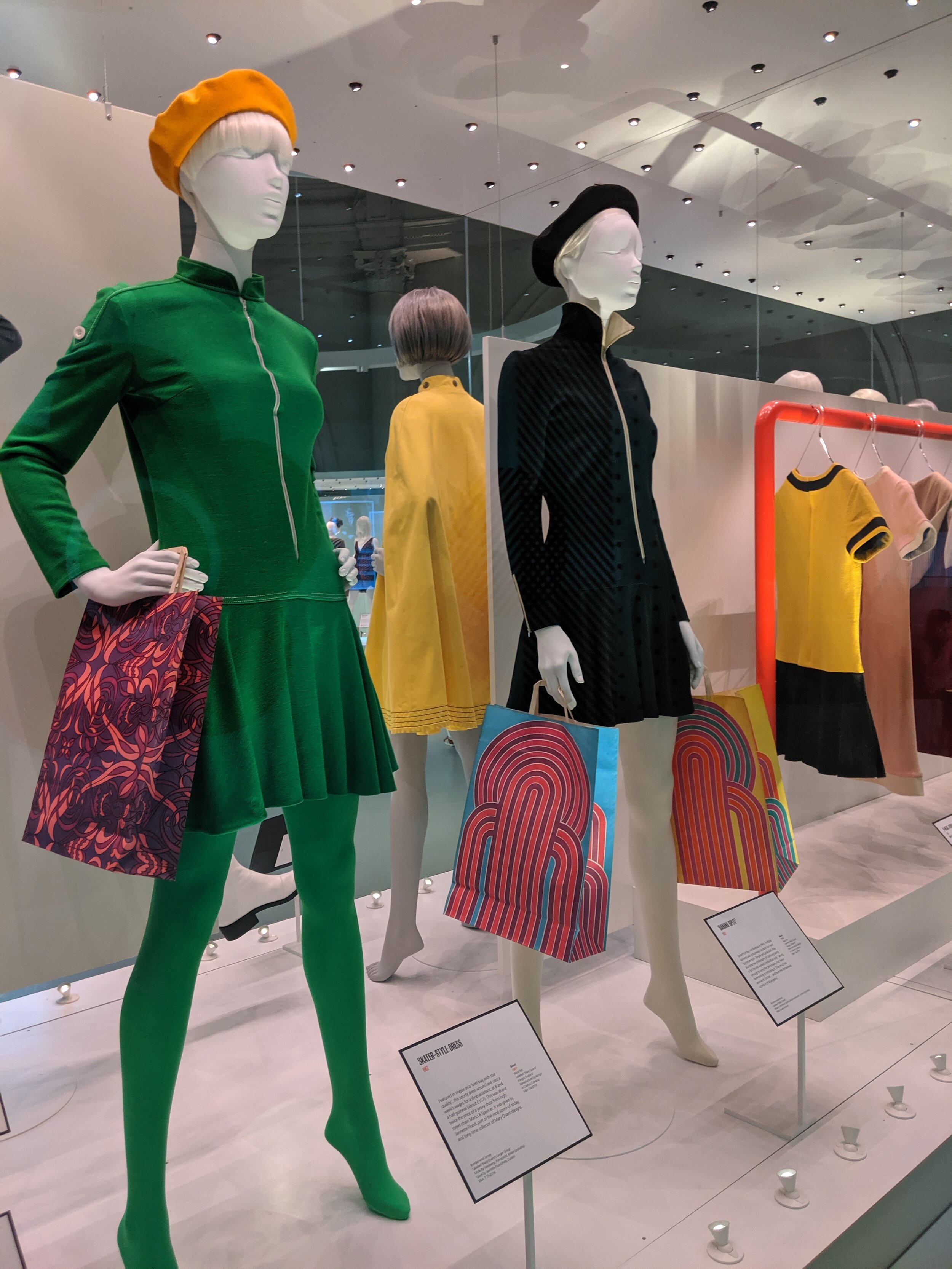Shifting Fashion: Mary Quant’s Kings Road
Last night, whilst enjoying my aperol spritz and cicchetti at one of my favourite restaurants near Sloane Square, I tried to picture the cool and fashionable Kings Road of the 1960s. Aware of its historical and cultural significance for 20th-century artists and designers, I have always loved this street in Chelsea. Having said that, I don’t think I’ve ever taken the time to properly imagine what it would have been like to be me on the King’s road in its heyday.
Fortunately, I have already had some help from the V&A and its fabulous current Mary Quant exhibition. Transported to a bustling and creative world with colourful and striking shift dresses, mini-skirts, macs, shoes, tights and makeup, the show brings the iconic Kings Road to life with its displays and staging. Living in London in 2019 it could seem a little difficult to fully appreciate that what Quant was doing 60 years ago was in any way revolutionary. But times were different then. Politics aside, Quant wanted to bring fashion to the people.
Opening her own small, self-service boutique which she named ‘Bazaar’ in 1955 on the King’s Road, Quant’s driving force was to design clothes for real women. Cutting fabrics that she bought nightly in Harrods, she made clothes with herself in mind, clothes that would appeal to all women and clothes that couldn’t be found elsewhere. Inspired by Pop Art and schoolgirl playfulness, her designs were for modern women, women that were becoming liberated. Quant was part of this liberating moment.
Breaking away from the dominance of Paris, Quant’s Bazaar offered affordable fashions to ordinary people. With the boutique scene quickly exploding, young people flocked to see and ‘be seen' at vibrant new stores opening on London’s Kings Road and Carnaby Street. Slim-fitting, brightly coloured outfits helped create the image of Swinging London with Mary Quant’s mini-skirt earning its place as the decade's most iconic look.
It was real women that were buying and wearing Quant’s designs and the show acknowledges this by taking us on a journey down Quant’s Kings Road, telling us the stories behind the garments displayed. This is really highlighted by the inclusion of the pieces that were crowd-sourced from a national appeal, #WeWantQuant. Caroline Hopper’s pink cotton blouse, for example, was bought straight out of Bazaar’s shop window to impress her geologist boyfriend on his return from Antarctica. Quant’s designs and fashion brand - and how great is that iconic daisy graphic - had clearly become main stream and cool at the same time.
Showcasing over 200 garments, accessories and cosmetics including sketches and photographs from the designer’s personal archive, the show is a must for anyone interested in design, fashion, or popular culture. For me, Quant’s bold colours and cuts, her branding, as well as her ambition to make fashion fun, affordable and liberating makes her just as relevant today as she was 60 years ago. Her designs too have stood the test of time. Last night, in my colourful shift dress paired with my newly purchased Quant-inspired earrings, I can still see her influence on the Kings Road.
Mary Quant Retrospective’ on at the V&A until 16 February 2020.
https://www.vam.ac.uk/exhibitions/mary-quant
Pocket Romper-Dress 1966 worn by Deborah Cherry
‘A Crate Full of Quant’ 1966
Mary Quant, Alexander Plunket Greene and nine models © John Adriaan





